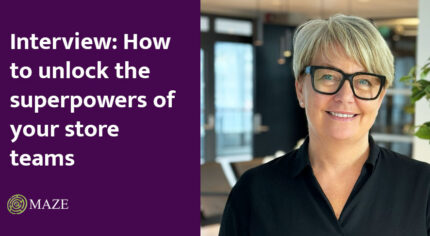
Feedback
Three steps to using conformity for better results
In order to show your employees how to change, it’s important to understand the social tendencies that occur when people are in groups. One of these tendencies is conformity – and it can help improve results.
Conformity occurs in all groups to varying degrees, but to exploit it positively in your business you must first understand what it is and why it occurs.
What is conformity?
Man likes to think of himself as an individual, but it is a fact that we are pushed to fit in and to do what we believe others expect us to do. Individuals behave in accordance with current norms in specific groups, such as at the workplace. Our behaviour changes so we appear to be ‘normal’ for the others in the group.
Conformity can also give rise to group pressure. Man has a strong need to belong to a group, and matching a group signals that ‘I am like you and I follow common rules’. Conformity can even occur when a person is alone – because we comply with norms even though no one else is present.
The purpose of conformity is often harmony, and to avoid the discomfort that people feel when one stands out from the rest. Acceptance is one of the most basic human needs and even the most independent person can give in to fit in. Conformity occurs instinctively in us – without this mechanism, mankind could not have survived, since from birth we were completely dependent on others to live.
‘Most are terrified to be rejected.’
Conformity means adapting behaviour or attitudes towards what appears to be socially acceptable in the group. Although many people imagine themselves to be unique individuals, most of their actions, most of the time, are based on social rules. Conformity can be simple things like stopping at a red light or going to work. Without such norms, the whole community would collapse.
How to use conformity to improve results in the desired focus area
By consciously controlling and utilising conformity, one can ensure that the entire employee group focuses on changing behaviour to improve results in a desired area. A consistent management that is clear about what the business’s focus areas and goals are, and what is expected of each individual, is a highly effective strategy for performance improvements and change processes. A conscious focus on best practice and the goals the individual has put in place affects the group.
For example, in a retail business, the focus area may be to make even better customer demand coverage.
Step 1: Arrange regular meetings where the focus area is talked about each time
‘The boss’s focus is my focus’
Through social control in the form of fixed meeting points with carefully considered content, we can use conformity to our advantage. These meetings can take place in many forms, with formal or informal frameworks. For some businesses, a weekly Monday meeting might be an effective forum to talk about areas of focus. For others it may better to have a chat on the floor when the day’s first shift is over. The most important aspect of these meetings is continuity and frequency – if spoken about and discussed regularly, conformity will establish itself as an area of focus for the whole group.
Within a retail business, Step 1 would mean the leader setting up regular meetings, relatively close together, where results for the previous week would be presented. The meetings would also identify which behaviour changes would lead to better results in certain areas.
Step 2: Let role models talk about their working methods
‘My best colleagues’ skills teach me to improve’
Repeated discussions around the focus areas are the first step to using conformity as an effective tool. But it’s important that meetings don’t concentrate solely on managers. Role models on the staff – i.e. those considered the strongest in the group in a particular area – can achieve powerful effects when they convey how they work on best practices to achieve their goals. It will then be natural for the rest, thanks to the natural pressure to conform, to try to do the same.
In retail, the manager would present results for the strongest in the group and ask them to describe how they have worked during the past week to bring about those results.
Step 3: Round the table
‘What everyone in the group talks about, including me, is invaluable’
To actively improve results and raise performance levels, it’s most effective to get the whole group to talk. When everyone has to give their results, and say how they’re working to improve them, people develop a better understanding of best practices relevant to the areas focussed on. Conformity will, in many cases, drive all employees to implement best practices actively in their daily operations in order to have something positive to report on the next meeting.
For a retail business, this would result in performance in the areas of focus during the previous week being presented. Then everyone present would relate how they had worked on best practice and behavioural changes to try to improve the outcome.
Be aware of conformity
In some situations – where a business is changing and uncertainty arises, for example – conformity is a factor to be controlled. It will always exist, but if we do not control it, there are other informal and uncontrolled influences that will. And at worst, these can be counter-productive to our efforts to incorporate best practices and performance improvements.
We have many years of experience in large-scale behavioural change. Read more about how the Maze method works here.




